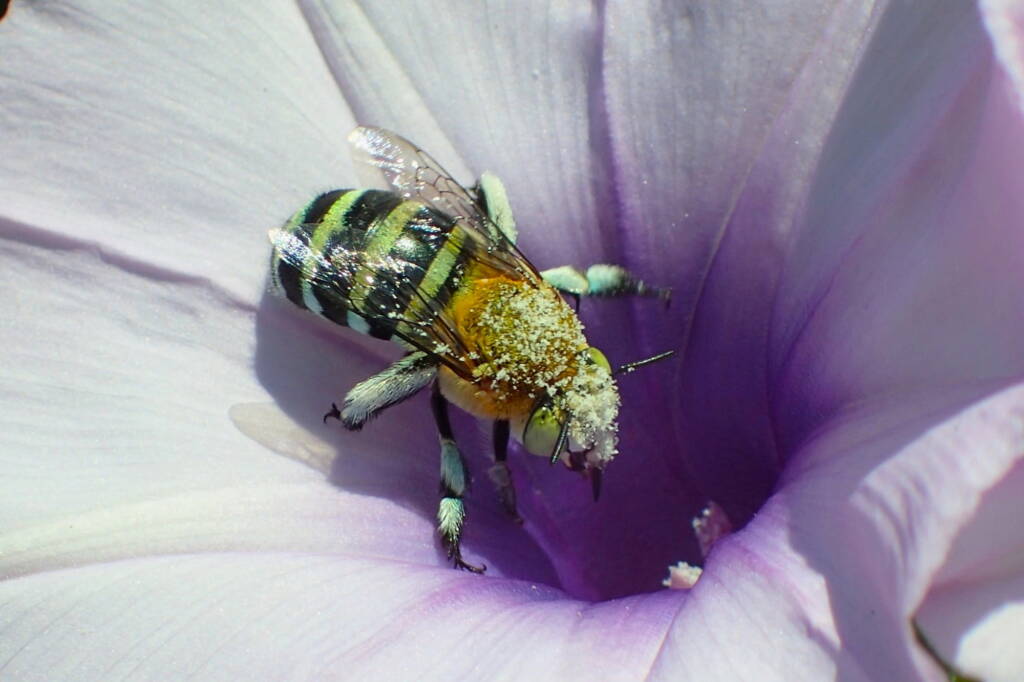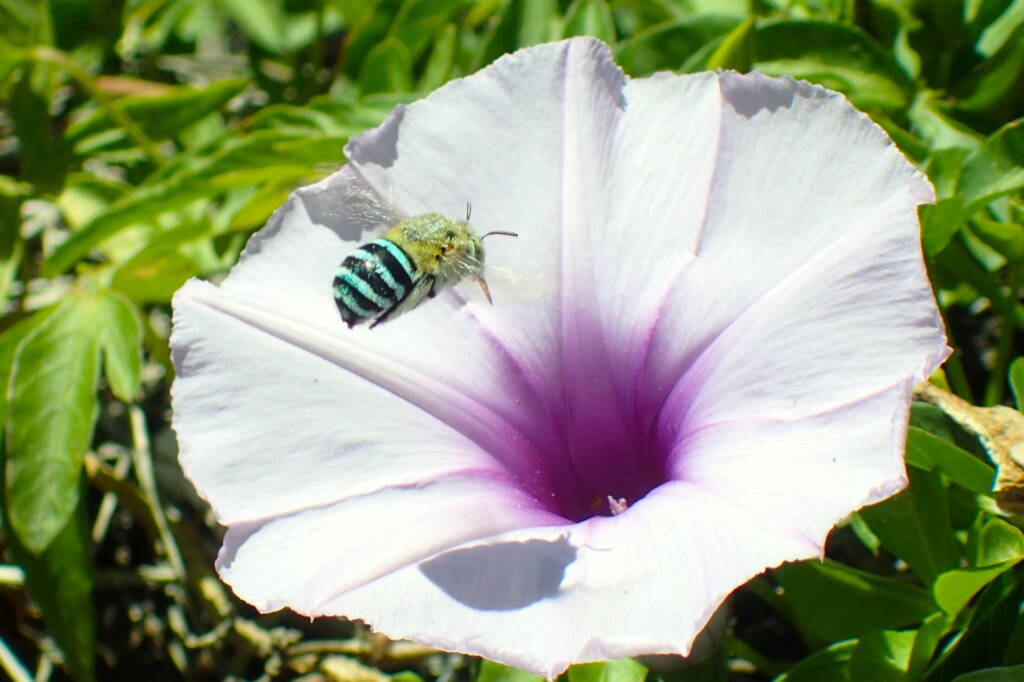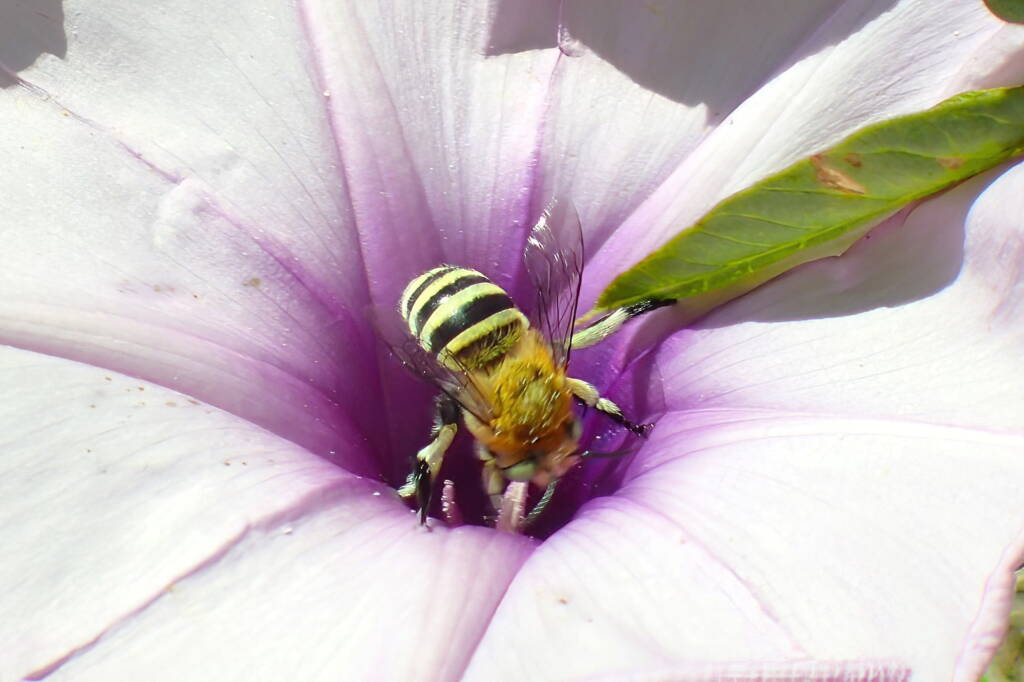Author Gary Taylor ◦
I don’t usually post banded Amegilla pics, but it’s not ‘cos I haven’t seen ’em, they’re in abundance here, but that’s the thing, so abundant that they’re just a bit common… Don’t get me wrong, I still love seeing them, and I remember the joy of actually capturing one when I first started bee photography (fast little buggers) 😃 then the pride when I got one in focus 😆 I’d spend hours on ’em, photographing everything they did, all the variations in colours… but when my computer warned me it was nearly full and I had to delete some files, I had to admit, as addictive as it was, I didn’t really need 800 pics of the same type of bee on the same flower 😅 Plus by then my eyes had been opened to the wonderful world of native bees and just how many other stunning little Aussie natives there were out there waiting to be found…

Buuutt… yesterday, while watching a male cuckoo bee (Thyreus waroonensis), I spotted a much smaller than average (even for a male) little Amegilla getting chased off by a couple of “regular” sized ones like it was the enemy… I saw it dive into a flower a bit further away and raced over but only managed a couple of blurry pics (4th and 5th) before it was gone… To me it looked and acted like a different species, dunno… However, one of the ways to tell them apart is the pattern on their bum and I’m hoping the 5th pic may be enough?.. The first 3 pics are Amegilla chlorocyanea (from the Greek Khloros, pertaining to the colours green and yellow, and cyanea, deep blue), for scale and colour variation… as her name suggests, she can be anywhere from yellow to green to blue (I’ve also seen a gorgeous peachy apricot colour)… 😃 (and surely a couple more pics wont hurt 😆) Butt again, to me it looks different…
Geraldton, Midwest WA




Photographs © Gary Taylor
Check out more blogs and contribution by Gary Taylor.
Footnote & References
